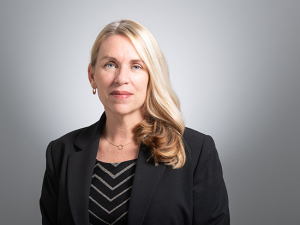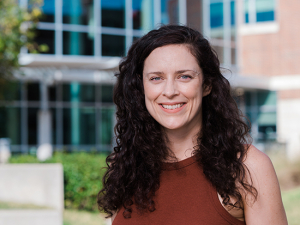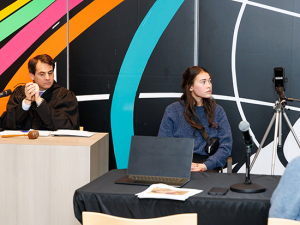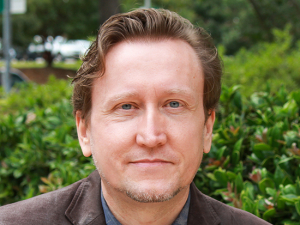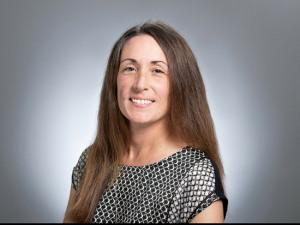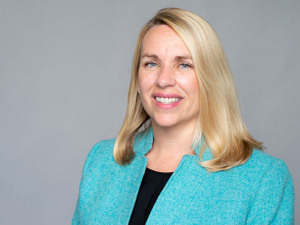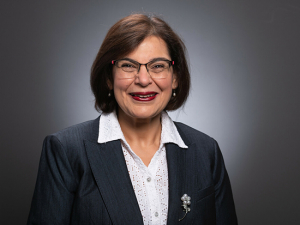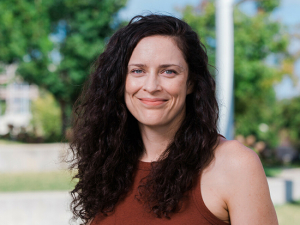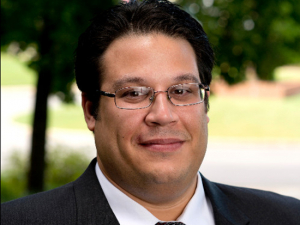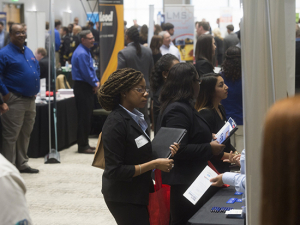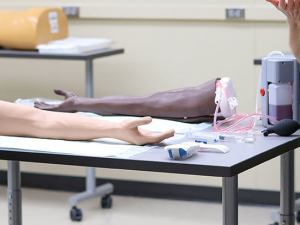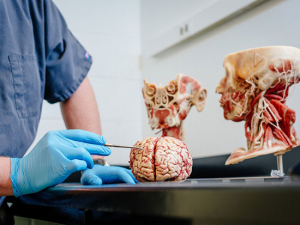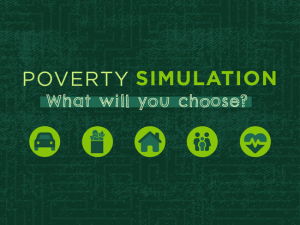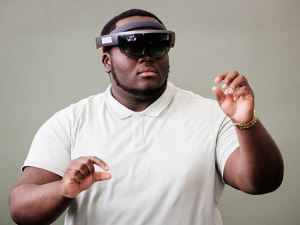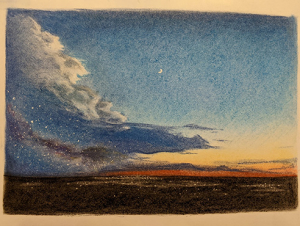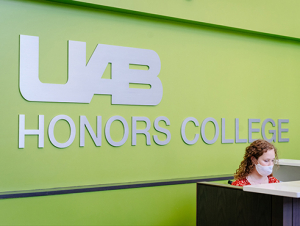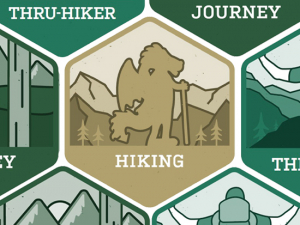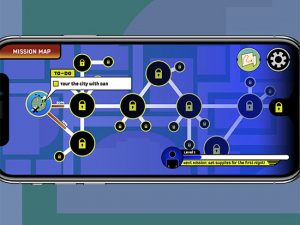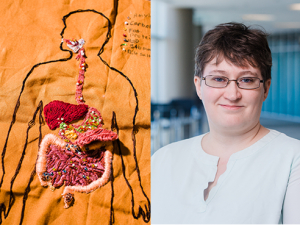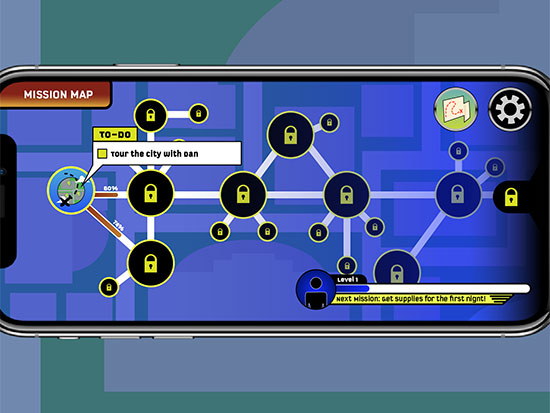 Screenshot from the Life Track app in development. The project challenges users to navigate a series of quests that illustrate the challenges of re-entering life after release from prison. Thanks to a grant from the College of Arts and Sciences' Interdisciplinary Team Proposal program, the project is now moving forward from prototype to working app.Every week, more than 10,000 former offenders are released from state and federal prisons.
Screenshot from the Life Track app in development. The project challenges users to navigate a series of quests that illustrate the challenges of re-entering life after release from prison. Thanks to a grant from the College of Arts and Sciences' Interdisciplinary Team Proposal program, the project is now moving forward from prototype to working app.Every week, more than 10,000 former offenders are released from state and federal prisons.
Most will be back. Some two-thirds of former offenders will be rearrested within three years of their release, studies show. In addition to finding a job and a place to stay, they must meet a long list of special conditions, including reporting to parole offices, participating in supervision programs, staying out of drinking establishments, not associating with persons who have criminal records, submitting to blood testing and attending anger management courses.
“Most people who come back to prison come back not for a new crime but for a technical violation,” said Stacy Moak, Ph.D., professor in the Department of Political Science and Public Administration. “It’s nearly impossible to do all the things you are supposed to do every week. That creates a revolving door, and that is not the goal of the correction system.”
Moak has spent three decades studying how to help former offenders successfully navigate reentry processes and making the case for less burdensome policies and procedures. Four years ago, she started working with the United States Attorney’s Office for the Northern District of Alabama to show students, faculty and others exactly how hard it is to stay out of jail.
Last spring, Moak and Sally Cramer, Ed.D., a visiting assistant professor in the Department of Art and Art History, began to explore a way to digitize that experience and expand its reach. Now, with nearly $30,000 in pilot funding from the Interdisciplinary Team Proposal program in the College of Arts and Sciences, Moak and Cramer are taking their social science/humanities partnership to an entirely new level.
From the court to the screen
Next Re-Entry Simulation scheduled for March 25
UAB students and employees, along with members of the community, can sign up to participate in the next live Re-Entry Simulation, scheduled for 12:45-3 p.m. March 25. Sign up on BlazerPulse here.
In 2017, Moak and Laurel Hitchcock, Ph.D., professor in the Department of Social Work, began leading the Re-Entry Simulation on a basketball court at UAB’s Campus Recreation Center. Developed by United States Attorneys, the Re-Entry Simulation challenges participants — at UAB, this can be up to 150 students, faculty, staff and community members at a time — to survive the first four weeks of release as a former offender. In a 2019 paper in the American Journal of Criminal Justice, Moak and co-authors reported that these simulations create “empathetic feelings that can reduce discrimination and stigma” and create “an environment more conducive to successful reintegration.” They recommended simulation-based training for audiences including “criminal justice personnel, service providers, court practitioners, judges and legislators.”
But in-person simulations are difficult to scale. The roots of a new approach began in fall 2020, when Sally Cramer was planning for the second offering of her Tapworthy Mobile App Design course. Cramer wanted her students to create app prototypes with a purpose beyond entertainment and eventually connected with Moak to focus the spring 2021 Tapworthy class around the experiences of the formerly incarcerated. (The entertaining story of how this connection developed is told in a Reporter feature, “Course melds empathy with app design to help former offenders reenter public life.”)
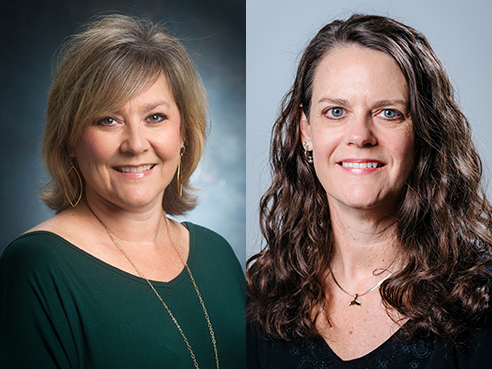 Stacy Moak, Ph.D. (left), has spent decades studying how to help former offenders navigate the challenges of re-entering society. Sarah Cramer, Ph.D. (right), teaches a class on app design in the Department of Art and Art History. Together, they developed Life Track.Cramer participated in a Re-Entry Simulation, which “really shows the frustration” of trying to avoid a technical violation while on parole, she said. And Moak introduced Cramer’s students to members of the Offender Alumni Association, a nonprofit run by formerly incarcerated individuals who now work to help others successfully reenter life after prison. “They were able to hear real stories from real people,” Moak said.
Stacy Moak, Ph.D. (left), has spent decades studying how to help former offenders navigate the challenges of re-entering society. Sarah Cramer, Ph.D. (right), teaches a class on app design in the Department of Art and Art History. Together, they developed Life Track.Cramer participated in a Re-Entry Simulation, which “really shows the frustration” of trying to avoid a technical violation while on parole, she said. And Moak introduced Cramer’s students to members of the Offender Alumni Association, a nonprofit run by formerly incarcerated individuals who now work to help others successfully reenter life after prison. “They were able to hear real stories from real people,” Moak said.
During the spring 2021 semester, Cramer’s students created interactive mockups of the first few scenes of an app, Life Track, that digitized some of the Re-Entry Simulation scenarios. Coding an actual, working app was always outside the scope of the class, Cramer says, although both she and her students were eager to make it happen. “I’ve taught this Tapworthy class twice, and it has always been in the back of my mind to create a finished app, and something the students have pushed to do in the class,” Cramer said. “But we’re not computer programmers.”
Cramer and Moak presented on their app and course collaboration at the Justice Arts Coalition’s virtual Art for a New Future conference in June 2021. The response was enthusiastic. “The people we interacted with were extremely excited about this,” Cramer said. “The policy community is very interested,” Moak said. “This would be a training tool that is scalable and is perfect for conferences and other settings.” Both faculty wanted to move forward, but that would require the significant expense of hiring a programming team.
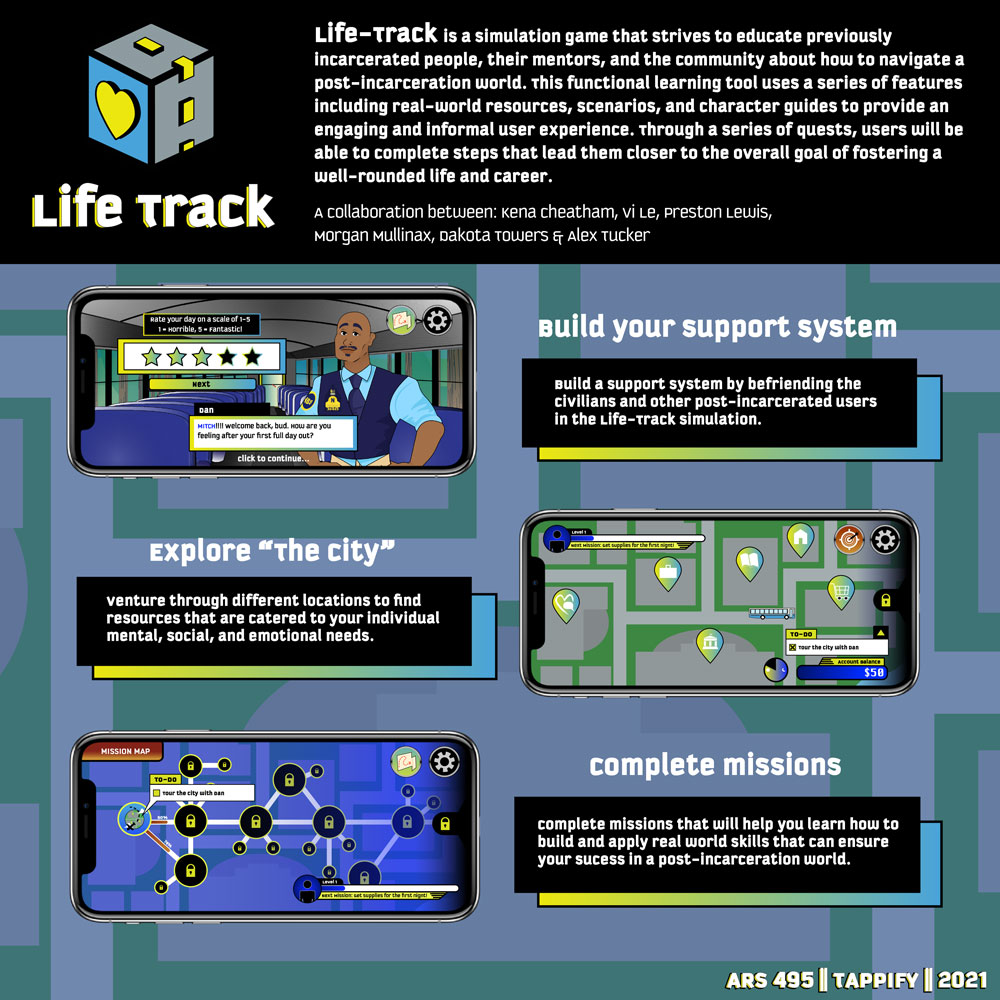 A promotional graphic for Life Track created by students in Cramer's ARS 495 Tappify class in spring 2021.
A promotional graphic for Life Track created by students in Cramer's ARS 495 Tappify class in spring 2021.
Humanities and social science, finding a way
So Moak and Cramer applied to the Interdisciplinary Team Proposal program. The program was launched in 2012 to support CAS faculty in new collaborations with researchers in other departments and/or UAB schools. This project is a perfect example of that mission, Moak said: “This really is humanities and social science finding a way to work together.”
Their proposal, with a budget of $29,500, was selected for funding. The bulk of that money will go to hiring Motion Mobs, a local app and web development company co-founded by UAB alumna Taylor Peake Wyatt. The proposal also includes funds to hire two students to contribute art and design for the app. “The way Motion Mobs works on these projects is they bring together different team members who are experts in all the various aspects,” Cramer said. “Our students will step into that team as design experts, which is an incredible resume-builder.”
The goal of Life Track is to navigate a series of quests to build a support system by befriending civilians and applying real-world skills to foster a productive life and career. The Re-Entry Simulation already contains the key elements of the experience, including character background and life events, Moak said: “They already exist in paper form — it’s a matter of building that out in a script form you can play in a game. And Sally’s students have all of the design skills to select colors and visuals that contribute to the experience.”
Once the team develops an initial proof-of-concept app, “we want to put it in the hands of former offenders and students from other disciplines and have them give feedback on it, to make sure it is working the way we want it to work,” Moak said. After the concept and execution are validated, Life Track could take on two tracks, she explained: “This game could be a training tool to be used all over the country by legislative sessions, parole boards, correctional officers and police officers.” The app also could help those about to be released navigate life after prison. “On one track, you are a service provider who is getting frustrated,” Moak said. “The other track is more affirming, to learn the steps to navigate the situation.”
After further development, perhaps funded by grants from foundations, Moak and Cramer envision applying for the National Science Foundation’s Smart and Connected Cities grant program. “We have to have the research and proof of concept and everything for that,” Moak said. “That’s why these smaller CAS grants are so important, because there is so much development that needs to go into this.”
“My students and I learned so much about this whole community of people that we knew nothing about and the struggles they go through with the reentry process,” Cramer said. “The idea that we can take a step further on the app design and have it potentially be helpful to people makes this so incredible.”
Together again
Moak and Cramer are working on another interdisciplinary student project in the spring 2022 semester. They are bringing together students in their Urban Politics and 4D Design courses to create videos telling the stories behind 16 locations of historic significance in Birmingham’s North Titusville community, which played a prominent role in the civil rights movement in the 1960s. “Political science and art students are working together in teams to research and record these stories,” Moak said. “In the end, you will be able to go on a map, click on a QR code and see what happened in these places.” The interactive adventure has struck a chord, Cramer said: “The students are really excited.”
